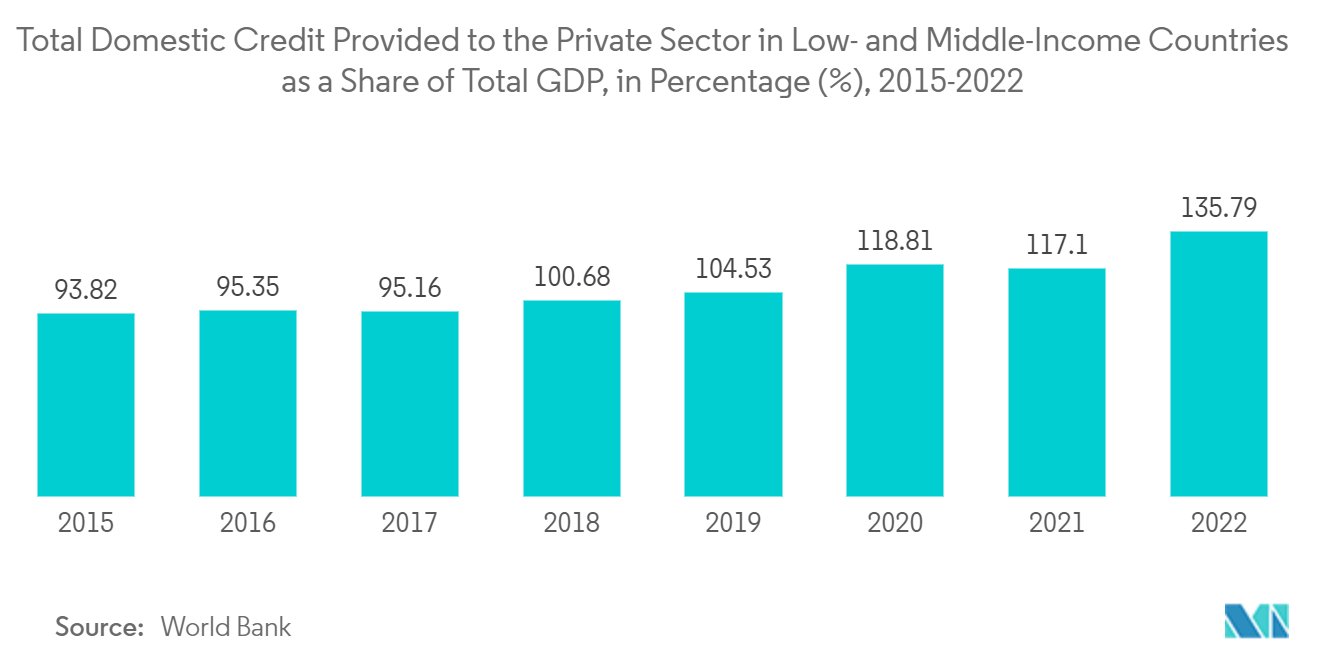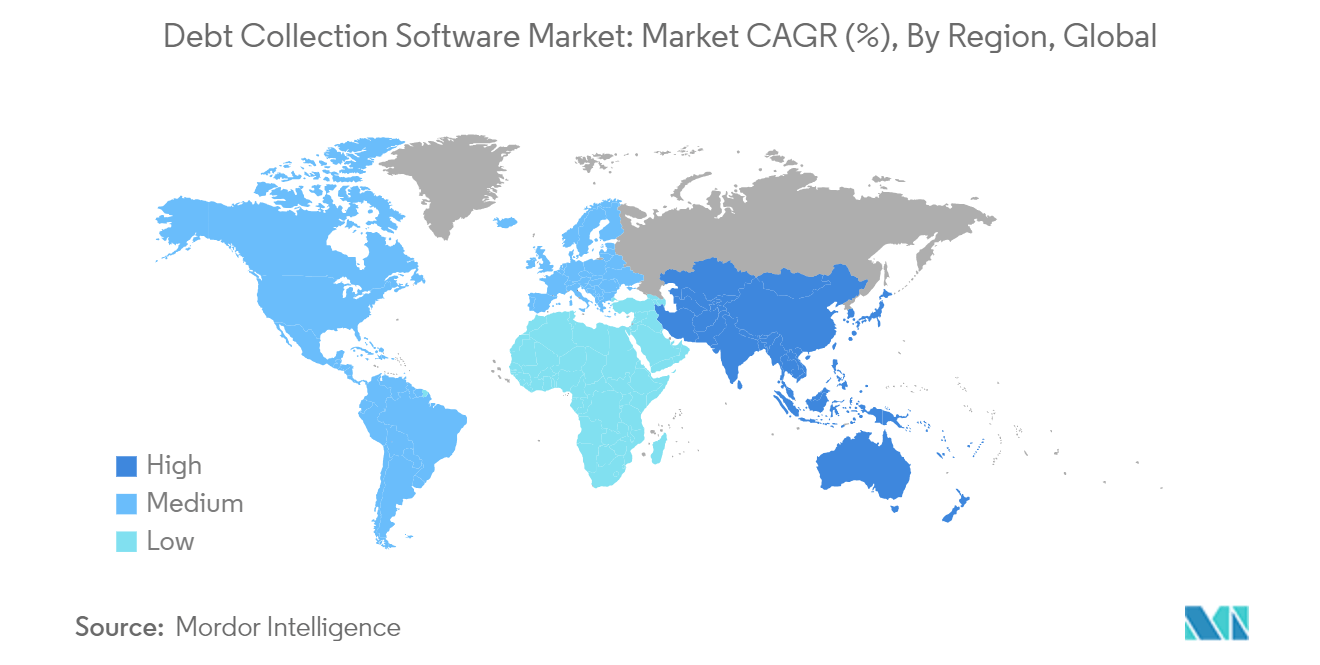Market Trends of Debt Collection Software Industry
Financial Institutions (Banks and NBFC) to Witness the Growth
- Implementing debt collection software across financial institutions to reduce the banks' risk for loan defaulters by digitizing the collection operation through advanced technology and analytics-based Debt collection software is fueling the market growth by supporting the development of lenders' overall revenue and profitability.
- Additionally, the trend of banking sector priorities in lowering the NPAs has led financial organizations to understand the repayment capacity of a borrower to locate areas for high and low delinquencies, driving the market of debt collection software due to their feature of delinquency management platforms to streamline and automate the collection process in the financial sector for better collection efficiencies.
- The deployment of cloud-based debt management software due to its scalability and compatibility to integrate BFSI sectors' on-premise and cloud-hosted data sheets for analyzing debt collection patterns drives the market's growth. The back-end applications in the collections function in Financial Institutions are increasingly using cloud technologies, advanced analytics, artificial intelligence (AI), machine learning (ML) techniques, and ready-to-consume application programming interfaces (APIs) for better reliability and accuracy in designing collection strategy for the loans, fueling the growth of the market.
- The market vendors, such as Pegasystems, Temenos AG, etc., are introducing a comprehensive suite of debt resolution solutions, including digital collections, debt analytics, litigation management, and a collection mobile app powered by AI-driven intelligent automation and machine learning models to manage debt collections, which is fueling the adoption of the debt collection software in the BFSIs because, through complete collection solutions available in the market, users can easily implement those solutions for better recovery efficiencies.
- For instance, in June 2023, Secure Trust Bank partnered with EXUS Software to optimize the bank's collections operations through a data-driven, zero-customization approach. The bank has planned to use this single platform to reduce the complexity of business processes, streamline all communications with customers, and gain full visibility of the complete customer journey in collections processes, fueling future market growth in the BFSI sector.
- The World Bank report stated that the domestic credit to the private sector in low and medium-income countries had increased significantly and crossed their GDP in FY 2022, which showed the increase in the amount of debt in the market and raised the demand for an automated and software-based debt collection systems in the financial institutions.

Asia Pacific is Expected to Register Significant Growth
- The debt collection landscape in China has undergone a remarkable transformation over the past few years due to new, technology-driven approaches that offer increased efficiency and compliance in debt collection. Additionally, the market's growth over the forecast period is analyzed in light of the rising bad debts and the increasing need to automate debt collection processes in end-user industries.
- The growth of the debt collection software market in China is largely driven by the increasing demand among end-user industries to minimize bad debt and automate debt collection through advanced technology-based software. As the country's financial market continues to grow and adapt, market vendors offering innovative debt collection solutions will continue to gain significant traction in ensuring efficient, compliant, and secure debt collection processes for end-user industries.
- In India, the debt collection software market has witnessed substantial growth in recent years. It is expected to continue growing due to the significant presence of global market vendors, the emergence of new debt collection software platforms, increasing bad loans, and technological advancements in debt collection practices. Challenges associated with the current economic landscape, especially in managing debt collection across various channels, lead to operational inefficiencies and rising expenses for Banks and NBFCs, necessitating the adoption of debt collection software.
- The debt collection industry in India swiftly embraced technology post-pandemic, experiencing substantial momentum. The rising demand for credit, evolving consumer preferences, and the expectation of seamless experiences have compelled lenders to adopt digitization to automate debt collection practices. This expectedly boosts the adoption of debt collection software in lending organizations, aiding lenders in saving time, costs, resources, and reputation while simultaneously improving customer experience and retention rates.
- Across the rest of the Asia-Pacific region, including Australia, Japan, South Korea, and New Zealand, among others, significant growth potential exists for the debt collection software market over the forecast period. This growth is attributed to increasing digitization and the need for automated debt collection in end-user industries such as Banks, collection agencies, telecom, government, etc. The growing imperative to minimize bad loans, coupled with the substantial presence of both regional and global market vendors, further fuels this growth

